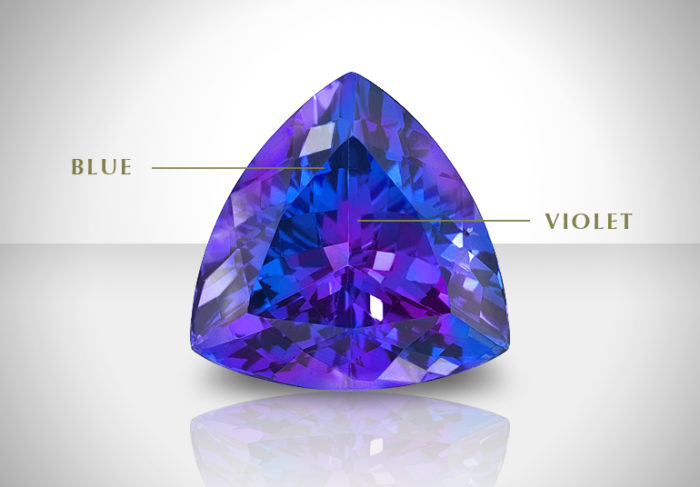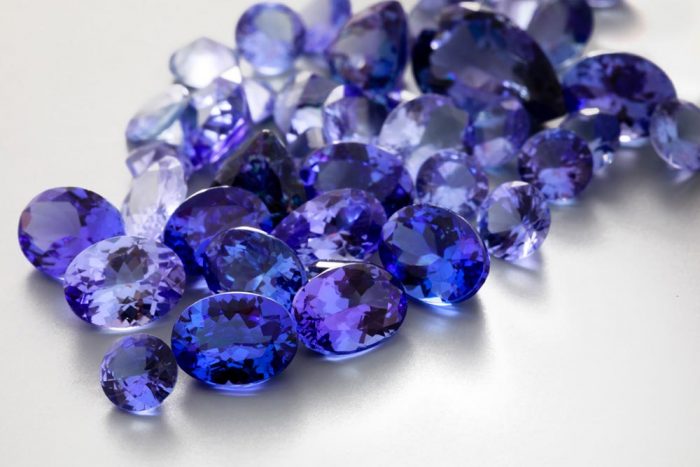
All tanzanite has the rare ability to show two different colors at the same time – both blue and violet. Tilt any tanzanite in the light and you will see this mix of colors.
A RANGE OF COLORS
Tanzanite forms in a wide range of colors: from light sky blues and lilacs through to deep indigos and royal blue. Some large tanzanites appear to be pure blue, but a closer look will, in most cases, show both colors simultaneously.

Blue, violet , lavender , sky blue, royal blue tanzanites !
PLEOCHRISM
Tanzanite is one of only two known gemstones that clearly exhibits two colors at once – due to its unique crystalline structure. This characteristic – called pleochrism – means a tanzanite can never be pure blue or violet colored, with every stone being a kaleidoscopic combination of the two.
Occasionally, very large tanzanite’s display an intense violetish blue with burgundy flashes of a third pleochroic color.
- A tanzanite which has more violet than blue is described as “bluish-Violet” or “bV”.
- A blue dominant tanzanite, which reflects more blue than violet, is described as “violetish – Blue” or “vB”.
TANZANITE COLOR FAQS
Is light or dark tanzanite better?
Pastel colored tanzanites are far more commonly found than more richly colored stones – about 80% of mining production is pastel in shade, from soft greyish blues to lilacs.
Vivid, more intensely colored stones occur much more rarely in nature, and, thus, are more expensive. The deepest tanzanite colors only make up to 1% of the world’s total tanzanite production.
Because of their comparative rarity and their beauty, darker-colored tanzanite’s are more expensive than the lighter-colored stones. The richer and more vibrant the color, the rarer and more expensive the tanzanite.
Nevertheless, the color intensity of a tanzanite gemstone does not reflect the stone’s quality, only its rarity. Each tanzanite, no matter what color, is still incredibly rare.
Tanzanite size, color and price.
The size and color of tanzanite gemstones are closely interrelated: larger stones tend to display the deepest colors, while smaller ones are usually pastel colored.
It is very rare to find a small, richly colored tanzanite. Tanzanite between 1.00 – 3.00 carats will usually be pastel to medium colored. As a rule, the deepest colors are only found in tanzanites weighing 5 carats or more.
Stones over 50 carats are deep blue, and after the 100-carat mark the color shifts to a blue so dark it is almost black.
The effects of yellow and white light
Yellow light (indoor lighting) will make a tanzanite appear more violet. White light (outdoors) will make a tanzanite appear more blue. This is a completely natural effect due to tanzanite’s crystal structure, and the degree of the color change differs in each stone with some tanzanite being much moodier than others.
CHOOSING THE RIGHT COLOR TANZANITE
Just like you, every gemstone is unique. No two are exactly alike and each has a different personality. The beauty of colored gemstones is like a garden of flowers – the variety is practically endless. Therefore, the most perfect gemstone may not be the most expensive or “perfect” one – choose the one that speaks to you and makes your heart sing.
MORE READING :


